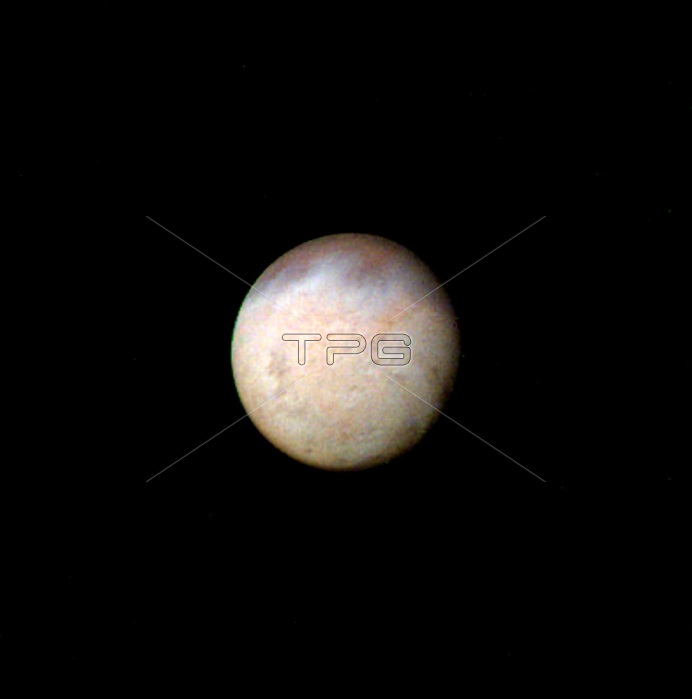
The smallest features that can be seen in this false color image of Neptune's largest satellite, Triton, are about 47 km (29 miles) across. The image, taken by Voyager 2 early in the morning of August 23, 1989, is a composite of three images taken through ultraviolet, green, and violet filters. The image offers an example of the kinds of puzzles scientists face on the eve of an encounter: Mottling in the bright southern hemisphere may be the result of topography, if Triton's crust is predominantly water ice, which is rigid at Triton's surface temperature. Alternatively, the mottling could be due to markings on a smooth surface, if the crust is composed of nitrogen, carbon monoxide, or methane ice, since they are soft at the same temperature.
| px | px | dpi | = | cm | x | cm | = | MB |
Details
Creative#:
TOP22316825
Source:
達志影像
Authorization Type:
RM
Release Information:
須由TPG 完整授權
Model Release:
N/A
Property Release:
No
Right to Privacy:
No
Same folder images:

 Loading
Loading